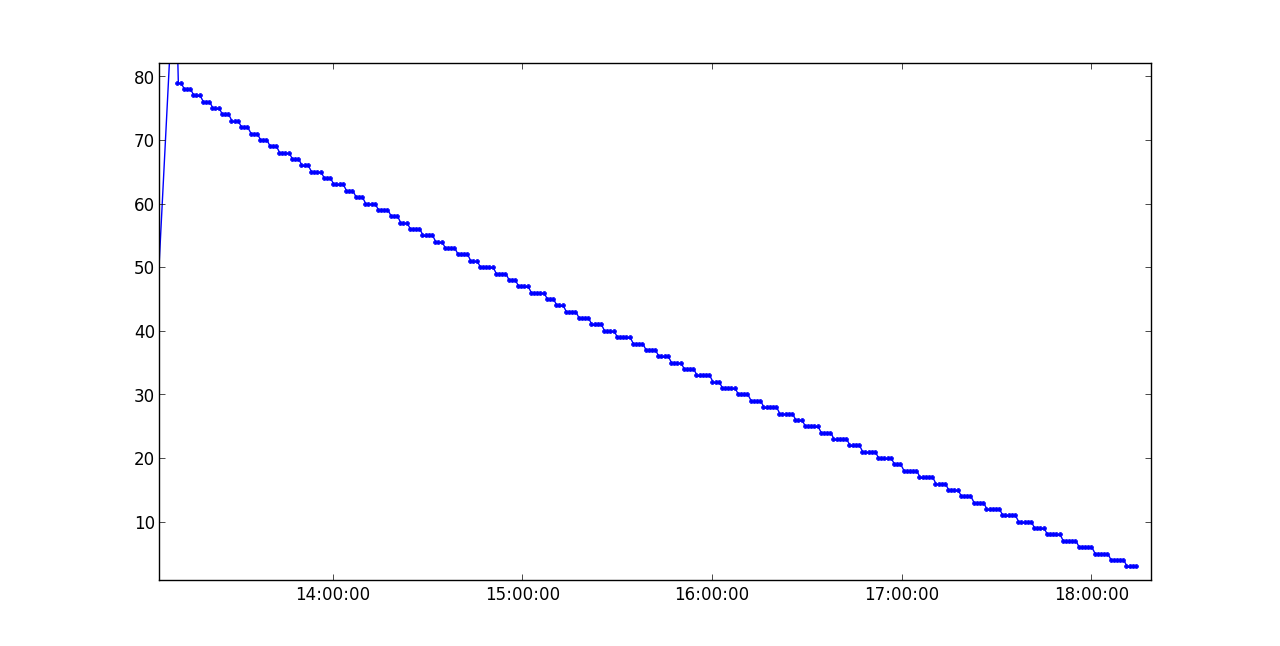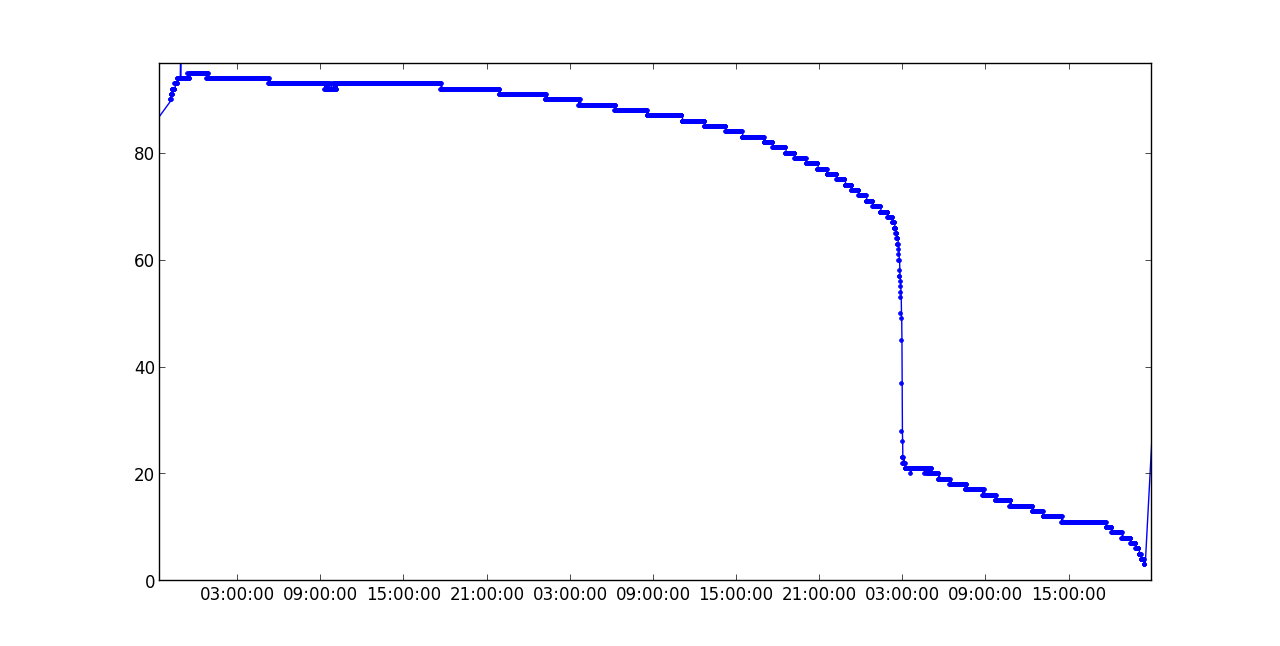My idea is to use a supercapacitor for energy, when there is no sun or wind. I decided to do some tests to make sure the energy stored is enough.
First of all, what would we theoretically expect? The BL600 will on average draw a pretty constant current, independent on the voltage it gets, and there is a linear relationship between current drawn and the voltage drop:
This means we can easily calculate the time we can survive on the capacitor:
If we, let's say, have an average current consumption of 100 µA, the time will be:
Looks promising, assuming that we only have to survive until the sun comes up, but it's hard to know how close to reality this is. Therefore, I made a couple of tests.
I have the following capacitors at my disposal:
- 2.5 F, Bussman ($ 11.50)
- 15 F, Vishay ($ 8.93)
- 90 F, Vishay ($ 19.16)
These are the general conditions for the tests:
- Sending power data over bluetooth to a computer with openhab, using the BL600 internal voltage sensor, which in turn saves the data in a mysql database
- Acquiring data every minute
- Using smartBASIC code intended to minimize current consumption, but still work smoothly. The exact code can be found here.
Below you can see the results:

(2.5 F, Bussman, 5 hours)

(90 F, Vishay, 72 hours)
The 15 F capacitor did not even last 5 minutes, so not much result to show there. My conclusion is that both Vishay capacitors are so unreliable that I don't want to use them (even though the 90F capacitor lasted an amazing 3 full days). The bussman capacitor has a beautiful linear behavior, as expected. 5 hours is not enough, but it turns out you can get an affordable 5 F capacitor from the same manufacturer for $ 10.50 (it's cheaper because it's rated at 5 V instead of 5.6 V). Furthermore, for these tests I have only been able to charge the capacitor to 3.3 V. If I use a DC-DC converter I can charge it all the way up to 5 V.
We can also see that 100 µA was quite an underestimation. Using the experiments we can get a more accurate value:
The BL600 Hardware Integration Guide mentions a possible average current of 4 µA, so a lot of improvement should be possible (although data transfer is not taken into account in that number, only keeping a connection). The solar panel I intend to use charges at up to 50 mA, so a lot of tolerance there as well.
 Ulf Winberg
Ulf Winberg
Discussions
Become a Hackaday.io Member
Create an account to leave a comment. Already have an account? Log In.